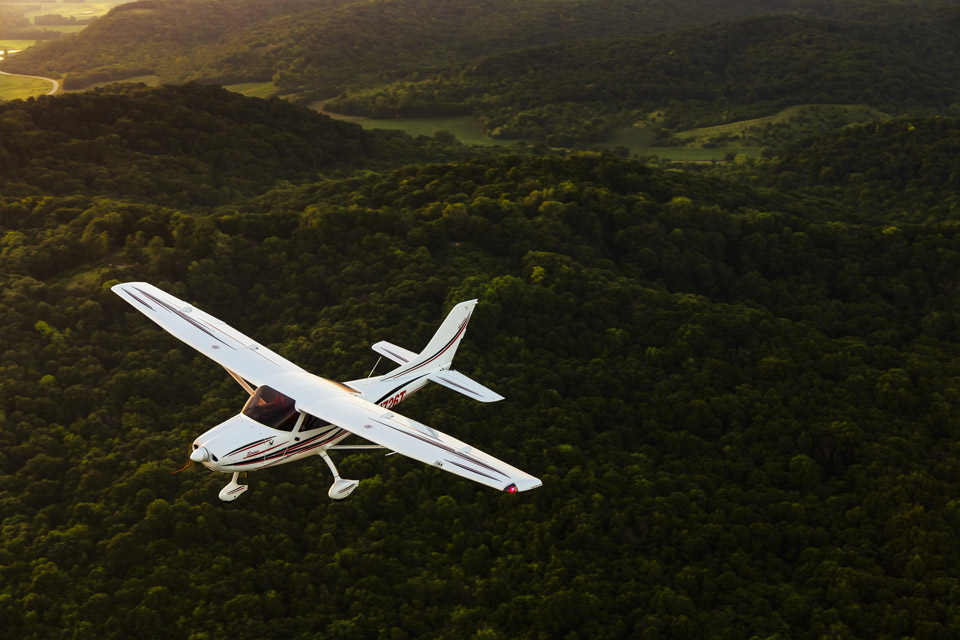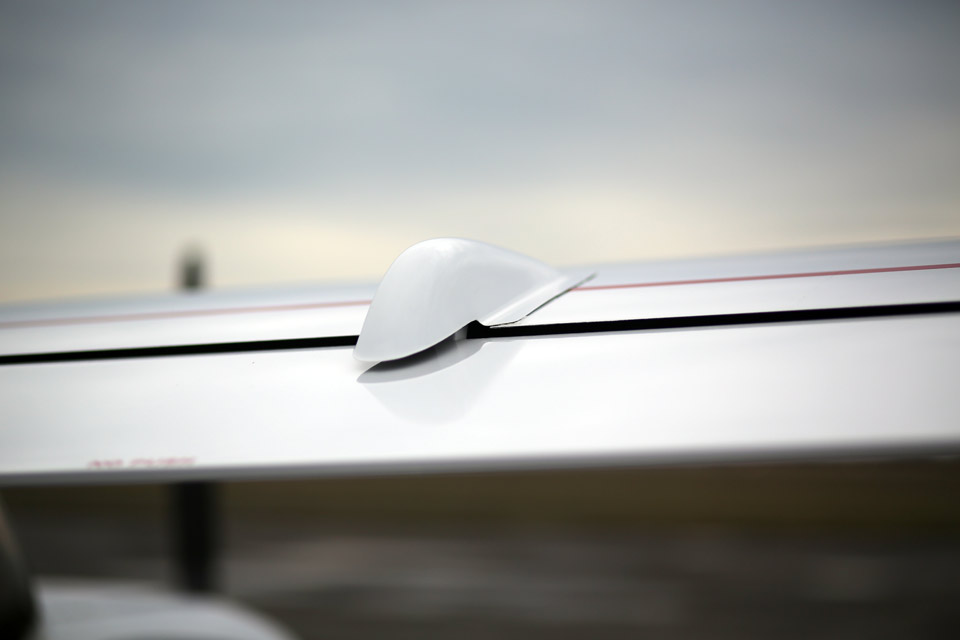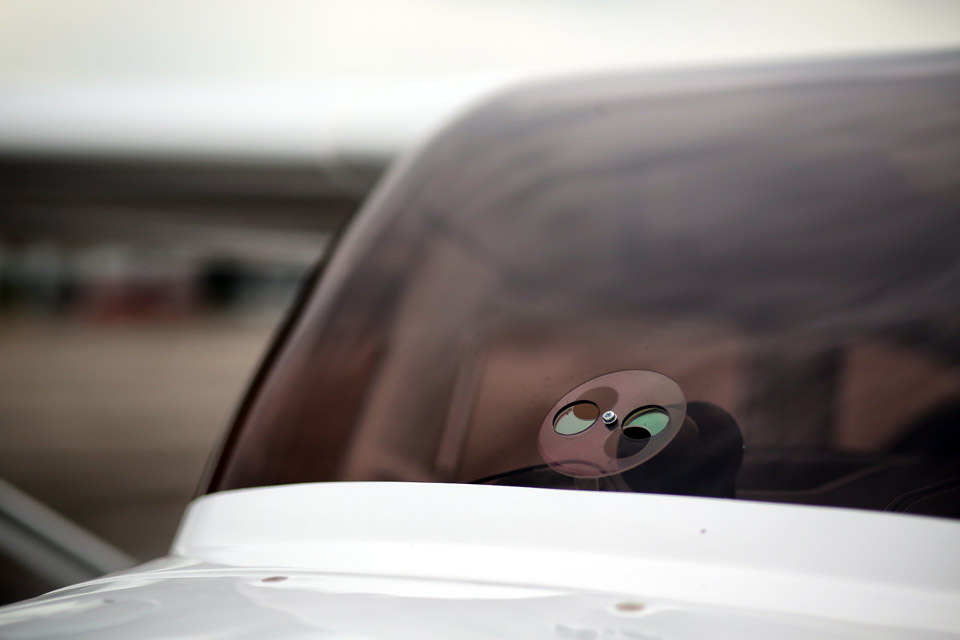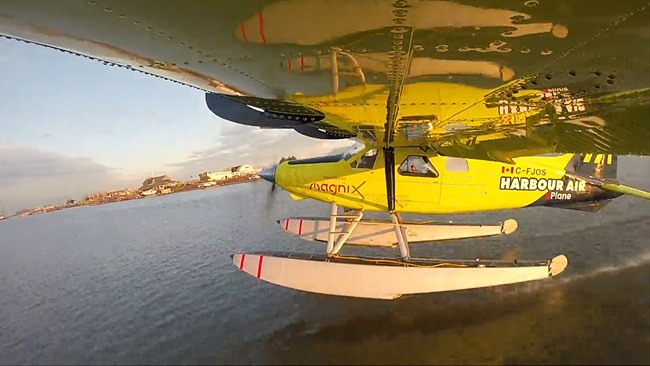A serious Sirius
A new Light Sport from TL Ultralight goes to (flight) school
So why call the Sirius Light Sport aircraft from TL Ultralight in the Czech Republic a “serious Sirius,” other than the play on words? Because it is a serious airplane in terms of capabilities. The one you see with this article has been sold to the Air Associates flight school near St. Louis. Chief Flight Instructor Scott Thompson thinks it will appeal not only to students, but to renters—because it’s fast, and can handle a crosswind like a “real” airplane. Properly equipped, it can even be flown in instrument weather by a pilot with an instrument rating.
Sirius is not the same airplane Cirrus Aircraft manufactures in Duluth, Minnesota, but some American pilots think it is, says Sirius dealer Matt Swanson of Swan Air (swanairllc.com). Let’s straighten that out. The TL–3000 Sirius is named after a very bright star 8.5 light years from Earth that forms the basis for our New Year’s celebration. Egyptians were first to celebrate the arrival of the then-reddish Sirius to its highest point in the sky at midnight on what is still today New Year’s Eve—probably accompanied by harp, flute, and tambourine rock bands. Greeks named it the Dog Star and Romans killed a red dog every year because they thought Sirius would bring them hot summers if they didn’t. That’s the Sirius we are talking about.
That’s not the only confusion. A few potential customers are still asking how many seats a Light Sport airplane has. A Light Sport aircraft has only two seats, a maximum weight of 1,320 pounds (1,430 pounds for seaplanes), and a maximum speed of 120 knots calibrated airspeed. It can be flown by a pilot having a valid driver’s license whose most recent FAA medical certificate application wasn’t denied.
The composite-construction, Rotax-powered TL–3000 deserves to be red-hot in the Light Sport market. Many of the common objections to Light Sport aircraft are overcome by its design. It is not difficult to enter, it flew faster than a Cessna 172 during my test flight, and it is able to handle a 17-knot crosswind. There are 100 Sirius aircraft flying worldwide, including 10 in the United States; it entered production in 2010.
At Spirit of St. Louis Airport in Chesterfield, Missouri, it replaces an Air Associates Cessna Skycatcher that was used for flight training—although it was common for lessons to be canceled because the Skycatcher’s crosswind limitation was 12 knots.
The 100-horsepower Rotax 912 engine powers it to an average 116-knot true airspeed (adjusted for temperature and altitude) cruise, based on a test flight out of St. Louis Regional Airport just across the Mississippi River from St. Louis in Alton, Illinois. Swanson said he normally expects 112 to 114 knots true airspeed. During our visit, another Sirius arrived with a different model of the French-made DUC Hélices propeller; it was getting only 106 knots true airspeed. Swanson said the proper ground adjustment of the blades had not been determined and further flight tests were required.
Pricing
For $159,555 (shipping from the Czech Republic included) you get the top-of-the-line luxury model with a Grand Rapids Technologies glass cockpit. For a bare-bones model, you can have analog instruments in a ready-to-fly Sirius starting at $133,585 (shipping included) that is equipped for daytime-only visual flight. While Light Sport aircraft can’t be used by airmen with a sport pilot certificate for instrument operations or night flying, the aircraft can be used at night by pilots with a private or higher certificate. The one I flew was not approved for flight in instrument weather, although the Sirius can be ordered in a configuration that is approved for flight in instrument conditions.
The same model with a dual 10-inch-screen Dynon glass cockpit is $163,950, while a Sirius with a dual-screen Garmin G3X touch-panel cockpit is $164,950. All prices include shipping to the United States.
Avionics are a real bargain for any Light Sport aircraft buyer. A Grand Rapids Technologies support technician estimated its “fully loaded” glass cockpit is $7,000 to $10,000 but would cost seven times more if it had to be fully certified, instead of certified to ASTM industry standards used by the Light Sport industry. ASTM standards also make software upgrades containing new features less expensive to add.
The airplane flown for this article had traffic warning and weather displays on the Grand Rapids Technologies dual displays, and XM WX Satellite Weather and traffic warning information on the Garmin aera 796 display. The XM weather is offered by SiriusXM Satellite Radio, which has no relation to the Sirius aircraft brand.
While the test aircraft had Grand Rapids avionics, it also had a Garmin communications and navigation radio, a night lighting package that included disco-like red LED lights in the cockpit, and a PS Engineering PM3000 intercom.
Options include a Woodcomp propeller, TruTrak autopilots with your choice of a variety of features, a turbocharged or fuel-injected Rotax engine, additional Garmin radios, and a full instrument-flight-rules avionics packages.
The new Seattle
St. Louis is the new Seattle weather-wise, or so it seemed when AOPA Senior Photographer Mike Fizer and I were trying to get air-to-air photos of the Sirius. Low clouds and a constant threat of rain kept us guessing. It was just after takeoff on the second try in three days that skies cleared over the Mississippi River.
Getting into the Sirius is easier than climbing into a Cessna 152 because the clamshell door isn’t in the way and rises automatically to the bottom of the wing. The seat isn’t adjustable but the rudder pedals are, using a knob with a humorous depiction of bare feet. Triangular seat cushions are used to raise short individuals in the seat; despite my six-foot frame, I used the cushions after the first of three flights because my coccyx demanded it.
It has a leather-wrapped control yoke (standard) and nosewheel steering with toe brakes plus a parking brake (also standard). Overhead switches and a double-stemmed single throttle contribute to multiengine airliner fantasies if that is important to you. Flaps can be moved to 15-degree (takeoff) and 45-degree (landing) positions without having to watch a flap indicator during deployment. Paper labels for switches are stuck to the panel, one of the few inelegant touches on the aircraft.
The center of the windscreen has two circular cutouts with a rotating plastic disk, also containing two holes. The disk can be rotated with a pull lever to adjust air flow into the cabin, along with two window vents, to keep the cockpit cool in summer.
With the weight of Swanson and me but no cargo, we still could carry 20 gallons of fuel, enough for two hours and 20 minutes at high-speed cruise plus an hour of reserve fuel. Light aircraft require pilots to be light on the controls, so only a small amount of back pressure is needed at 45 knots indicated airspeed to raise the nosewheel. While the best rate of climb is 55 knots indicated airspeed, the operating handbook suggests 75 to insure good engine cooling.
Coming back to the airport, the aircraft is slowed on final approach to 55 knots indicated airspeed, which seems very slow after cruising at 116 knots true airspeed. Pulling the elevator trim control to full nose-up position is barely noticed since the control feel is very light and trim isn’t really needed. It is very helpful at cruise speeds. I found the aircraft easy to land. With Light Sport aircraft that lose momentum quickly after a power reduction, I tend to keep a little power on through touchdown to avoid a sudden increase in the sink rate.
In flight the Sirius is a stable and comfortable aircraft. Barges and cliffs along the Mississippi River near St. Louis provided a backdrop for the sunset photos you see on these pages. Since I was in formation, visibility was key and I found it to be very good, although the wing root blocked my view out the upper corners of the front windscreen. Noise levels were low although I didn’t remove my noise-cancelling headset to test the natural cabin environment. Overall the Sirius is a pleasure to fly.
You can get the Sirius on floats, too, as soon as prototype testing is complete. Landing on water should cool down this red-hot star of the Light Sport world.
Email [email protected]
What’s hot about the Sirius
• Luxury features at below-luxury prices
• Speed
• Fuel capacity
• Crosswind capability
What’s not so hot
• Cheap paper labels on cockpit switches
• Wing roots block visibility at upper corners of the windscreen
• Difficult to check engine coolant level
• Tape rather than a fairing along the gap between the fuselage and horizontal stabilizer
SPEC SHEET
TL Ultralight TL–3000 Sirius
Base price: $133,585
Price as tested: $159,555
Specifications
Powerplant | 100 hp Rotax 912 ULS
Recommended TBO | 2,000 hr
Propeller | Fixed pitch, ground adjustable, carbon three-blade DUC Hélices Swirl
Length | 22 ft 10 in
Height | 7 ft 6 in
Wingspan | 30 ft 10 in
Wing area | 121 sq ft
Wing loading | 10.9 lb/sq ft
Power loading | 13.2 lb/hp
Seats | 2
Cabin width | 3 ft 9 in
Cabin height | 3 ft 2 in (seat bottom to cabin ceiling)
Empty weight | 760 lb
Empty weight, as tested | 824 lb
Max ramp weight | 1,326 lb
Max gross weight | 1,320 lb
Useful load | 560 lb
Useful load, as tested | 496 lb
Payload w/full fuel | 367 lb
Payload w/full fuel, as tested | 303 lb
Max takeoff weight | 1,320 lb
Max landing weight | 1,320 lb
Fuel capacity, std | 34.2 gal (32.2 gal usable) 205 lb (193 lb usable)
Baggage capacity | 75 lb
Galaxy GRS ballistic parachute rescue system
Performance
Takeoff distance, ground roll | 370 ft
Takeoff distance over 50-ft obstacle | 1,400 ft
Max demonstrated crosswind component | 17 kt
Rate of climb, sea level | 910 fpm Cruise speed/endurance w/45-min rsv, std fuel (fuel consumption) 5,000 ft
@ 75% power, best economy | 103 kt/5.6 hr (30.6 pph/ 5.1 gph)
@ 50% power, best economy | 76 kt/8.4 hr (20.4 pph/ 3.4 gph)
Max operating altitude | 10,000 ft
Service ceiling | 16,500 ft
Landing distance over 50-ft obstacle | 1,050 ft
Landing distance, ground roll | 490 ft
Limiting and recommended airspeeds
VX (best angle of climb) | 50 KIAS
VY (best rate of climb) | 55 KIAS
VA (design maneuvering) | 86 KIAS
VFE (max flap extended) | 55 KIAS
VNO (max structural cruising) | 115 KIAS
VNE (never exceed) | 138 KIAS
VR (rotation) | 40 KIAS
VS1 (stall, clean) | 43 KIASVSO (stall, in landing configuration) | 34 KIAS
For more information contact SportairUSA, North Little Rock Municipal Airport, 8222 Remount Road, North Little Rock, Arkansas 72118; 501-228-7777 or 888-359-7572; or visit the website.
All specifications are based on manufacturer’s calculations. All performance figures are based on standard day, standard atmosphere, sea level, gross weight conditions unless otherwise noted.
Extra: The capability of the Sirius to handle high crosswinds makes it a good choice for flight schools.
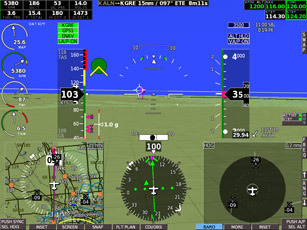 Grand Rapids displays record your flight
Grand Rapids displays record your flight
Grand Rapids Technologies cockpit displays can take snapshots of your screen or record a video. In this capture, fuel is shown in the upper left corner that says “F-Total” and the numbers “15.4” gallons. The fuel flow is the lower round gauge on the left. Traffic shows up on the map (not shown), the traffic inset, and also on the synthetic vision display seen here. It’s hard to see, but there is a small white diamond just below the right horizon indicator representing actual traffic. The diamond gets bigger as the conflicting aircraft gets closer. —AKM
VIDEO Extra: Fly along with us.

